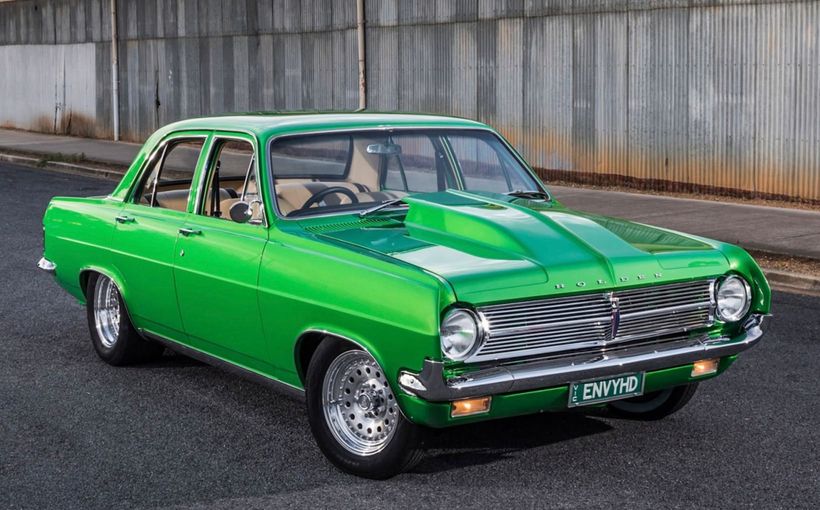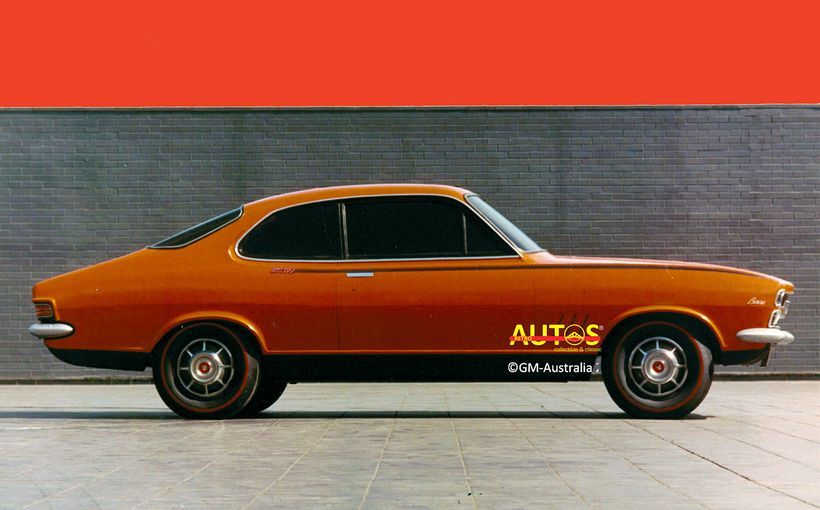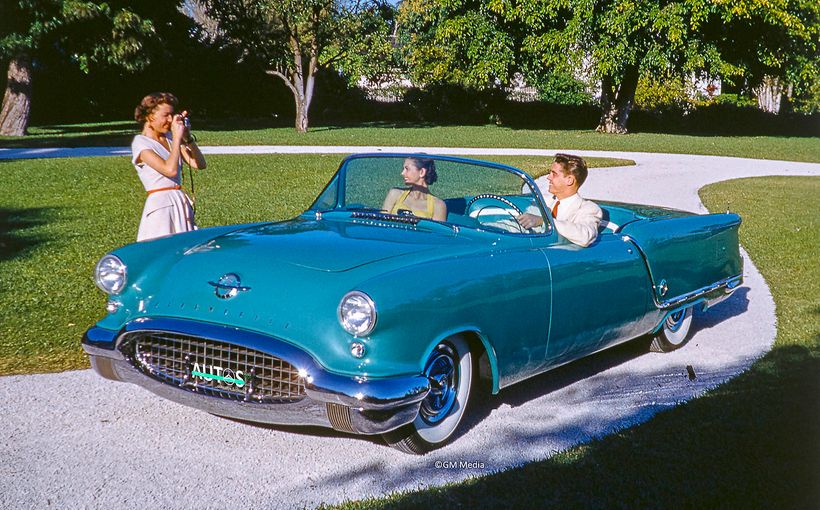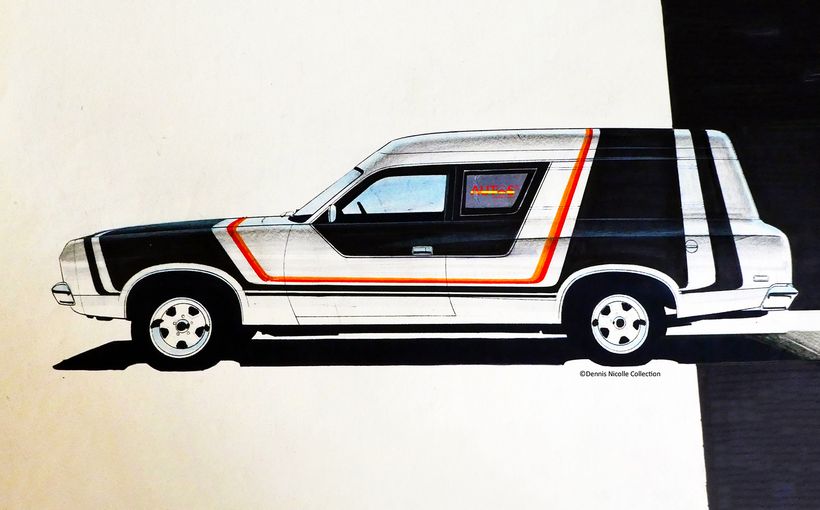WA Holden cancelled! Strategic mistake or smart decision?

The WA Holden was meant to replace the HJ model in January 1978. At least that was the plan in April 1972 when Holden’s managing director, A.G. Gibbs, sent his updated product planning report to his boss, Pete Estes, at GM in the USA.
But the WA never went beyond the clay model stage. It was cancelled in mid-1974 in order to save $80 million. The decision set Holden on a trajectory that helped Ford achieve market leadership.

In my recent Retroautos’ stories about the never released HV and the delayed release of the HJ, I covered the problems Holden was experiencing in the early 1970s. There’s no need to go over it all again in depth, other than to summarise that the fates of the HV, HJ and WA were the outcome of cost cutting caused by Holden’s long-term sales and market share decline, combined with top management’s indecision about what needed to be done to ensure Holden’s future success. A link to the HV and HJ articles is at the end of this story.




The WA showed every possibility of being a sales winner. The surviving photos of the initial styling proposals reveal a car that would have compared well against the XD Falcon.
But, before I get further into the story, here’s why the car was coded WA.
In the early 1970s, GM was in the process of aligning all of its vehicle platforms across the world, using wheelbase length as an overall guide. Large cars were coded “W”. Medium cars were coded “V”. Next on the ladder was a “U”. Then came the “J”, “T” and “S”. The latter had a wheelbase of around 90 inches/2286mm. Holden began the transition to the new codes when the four-cylinder LJ Torana was re-coded as the TA in March 1974. It’s also why the Torana/Sunbird was coded UC in 1978 and the first Commodore was coded VB.

The WA Program
The WA program commenced in June 1973. At the same time, Gibbs retired as managing director and was replaced by American Damon Martin. Joe Schemansky was Holden’s design director at the time. The assistant design director was Richard Finnegan who had just arrived in Australia after styling the 1973 XP987 Corvette—a Chevrolet concept car featuring a mid-mounted rotary engine.


Peter Nankervis, who was the chief designer in Holden’s large car studio where the WA would be shaped, recalled the product parameters.
“It was to be built on a shortened HQ frame with a wheelbase of 108 inches/2743mm for the sedan and a new hatchback. There was to be a long wheelbase luxury sedan, wagon and commercials on a 112 inch/2845mm wheelbase. Both offered more interior space than their HQ equivalents. We got to a clay model stage of the sedan and hatchback.”

The front and rear ends of the WA were to feature plastic body-coloured bumper bars. At the front, they would incorporate the grille. The Statesman was to have a six-window design. Nankervis also recalls that:
“We wanted…. four headlights, slanted front end, a low belt line and lots of glass. The Statesman had a front end and grille similar to the Aston Martin Lagonda.”



The design team planned to move the car away from the HQ’s rounded forms. The shape had a low-slung, sharp-edged silhouette. “More European” was how it was described. It also blended a number of GM designs of the era including the 1974 Chevrolet Vega and 1978 mid-sized Oldsmobile fast back sedans and coupes. There are hints of the Torana GTR-X in there, too. Overall, WA’s crisp flanks were aligned with GM’s shift to the “Sheer Look”, as GM design supremo Bill Mitchell described it.



Mechanically, the WA would retain the HQ/HJ’s front suspension and three-quarter chassis, albeit shorter. Independent rear suspension was planned. Engines were largely carryover. Fuel consumption was expected to improve because the car was smaller and lighter than the HQ/HJ.

There is no doubt that the WA would have been ahead of its time on Australian roads. The hatchback design, a six-window luxury model and independent rear suspension were all class leading advances. The pressure would have been on Ford and Chrysler. But trouble was looming.
In the first months of 1974, with the economy heading into a recession and Holden’s sales continuing to fall, the senior decision makers were uneasy about the WA. Profits needed to be protected. The accountants were talking “significant cost cuts”. The $80 million required to develop the entire WA range was a tempting target for the bean counters. It was a large amount and easy to cut because the WA project was still in its early stages. It also meant that more important and much harder decisions about the number of staff and factories could be avoided.

Meanwhile, GM in the USA were asking why Holden needed to develop the WA. Wasn’t there something else in the GM range that would suffice? Nankervis adds his perspective.
“In early 1974 the company was very sceptical about a unique W-car for Australia and that played into the cost concerns at the time.”
The outcome? The WA was cancelled.
Author and retired design director of Nissan and Toyota Australia, Paul Beranger, insightfully wrote in his must-have book, Crayon to CAD, that Holden was:
“being driven by bean counters, less interested in product that had customer appeal than concerns over expenditure.”
The design studio was directed to create significantly cheaper alternatives.


Carry on with carry over
The alternatives demanded by the financial managers involved stretching the life of the HJ. Model codes were yet to be assigned, but would become HX and HZ. This was to be followed by a major restyle for 1979, coded WB. The WB had to use as many carry-over HQ panels and inner structures as possible to save money. The plan was for a short wheelbase WB Kingswood/Premier and long wheelbase wagon, commercials and Statesman/Caprice.
The first WB Kingswood clay model was created while the WA was still in the design studio. Visually, it was not a fair comparison. The aging HQ shape proved troublesome to disguise without changing most of the sheet metal. The WB is the subject of the next Retroautos.

While the decisions about the WA and WB were being made, the LH Torana was launched, and attention then turned to its future replacements, known as the VA, VB and VC. In October 1974 a full-sized clay model of the VA was ready for approval and a comprehensive product report had been sent to GM confirming the release schedule. The VA, VB and VC releases were planned for the Januarys of 1977, 1980 and 1983, respectively.

At about the same time the VA Torana report was being read in Detroit, Holden was given information about a new V-car being developed by Opel for a late 1977 European release. Detroit suggested that Holden assess the Opel V-car instead of continuing with the VA/VB/VC Torana. During 1975 a number of Holden managers flew to Germany. Early reports suggested it was a candidate to replace the Torana.

A wise decision?
I’m sure that those who cancelled the WA program considered it a wise move. From their point of view—remember, this is late 1974 and early 1975—the cancellation saved around $80 million of forward costs during a financially challenging period.
They would have argued that the product line-up for the late 1970s was capable of improving Holden’s situation. The TX Gemini, which was about to be released, was an up-to-date four-cylinder small car to replace the aging TA Torana. The VA/VB/VC Torana was in the pipeline and Opel’s V-car was a potential alternative. The HJ (and HX/HZ) range would compete with the Falcon and Valiant until the restyled WB arrived.
Yes, it all looked ok, provided the economy improved and all models delivered sales improvements. But, as the future would show, that did not happen. Sales continued to decline and market share sank to 25%. More cost cutting meant the WB was reduced to just the commercials and Statesman/Caprice.

A strategic mistake?
Although Holden may have saved $80 million in the short term by cancelling the WA, it was a long-term strategic mistake, in terms of product and financially.
The decision put Holden on a trajectory that when the company’s new managing director, Charles “Chuck:” Chapman arrived, in late 1975, he had limited options and hard decisions to make about product strategy and costs, which his predecessors had mostly avoided.
Restarting the WA program was not one of those options. He fixed the handling of the company’s products, introducing the Radial Tuned Suspension program, as a way to re-fresh the line-up. He approved the smaller and narrower Opel V-car as Holden’s main competitor against Ford’s Falcon and Chrysler’s Valiant. The WB would support the V-car. GM’s planned global J-car was designated to replace the Torana in 1982.
“Australianising” the V-car sedan and wagon ended up costing at least $110 million. That was 40% more than the bean counters claimed would be saved by cancelling the WA.
As decisive and focused as Chapman was, Australia’s car buyers demonstrated their traditional preference for a large family sized car. They bought the bigger Falcon, and Ford achieved market leadership in 1982. It took until 1988 and the VN Commodore, a car which matched the WA in size, plus a $750 million debt bailout by GM, all negotiated in Detroit by Chapman and his team, for Holden to get back into the game.

Imagine what might have happened if the WA range had been approved in 1974 and released in 1978. It would have given Holden a strong product to compete against the XD Falcon and CM Valiant. Our automotive history would have been very different.

In the next edition of Retroautos I will delve into the saga of the WB. Unlike the HV, HJ and WA, the WB’s fate was not the outcome of management indecision. Quite the opposite!
Links: HV Holden. HJ Holden. TX Gemini.
Retroautos is written and published by David Burrell with passion and with pride. Retroautos’ stories and images are copyrighted. Reproducing them in any format is prohibited. Retroautos is a registered trademark. Reproducing it in any format is prohibited. Special thanks to John Field and Richard Ferlazzo who opened Holden’s design studio archives a few years ago so we can see these wonderful images.









